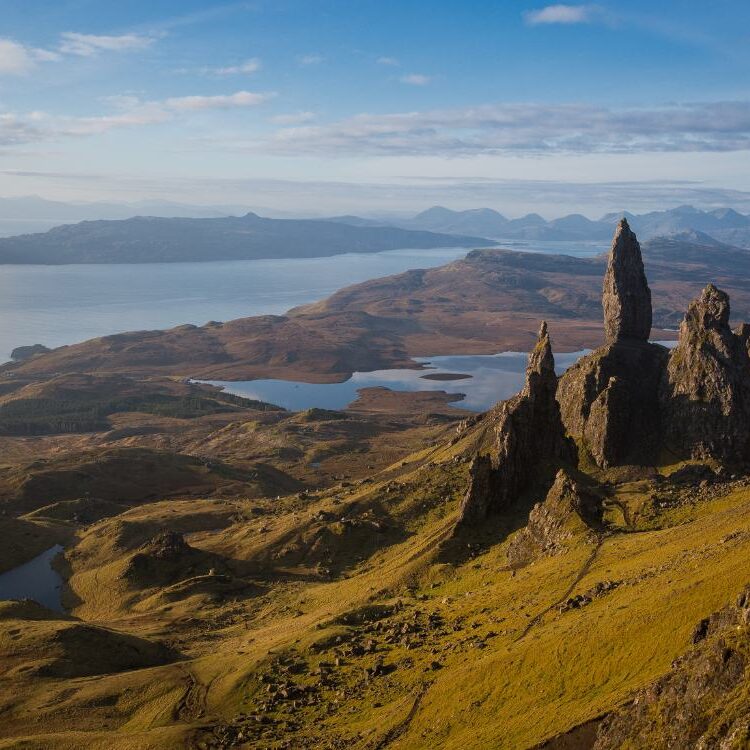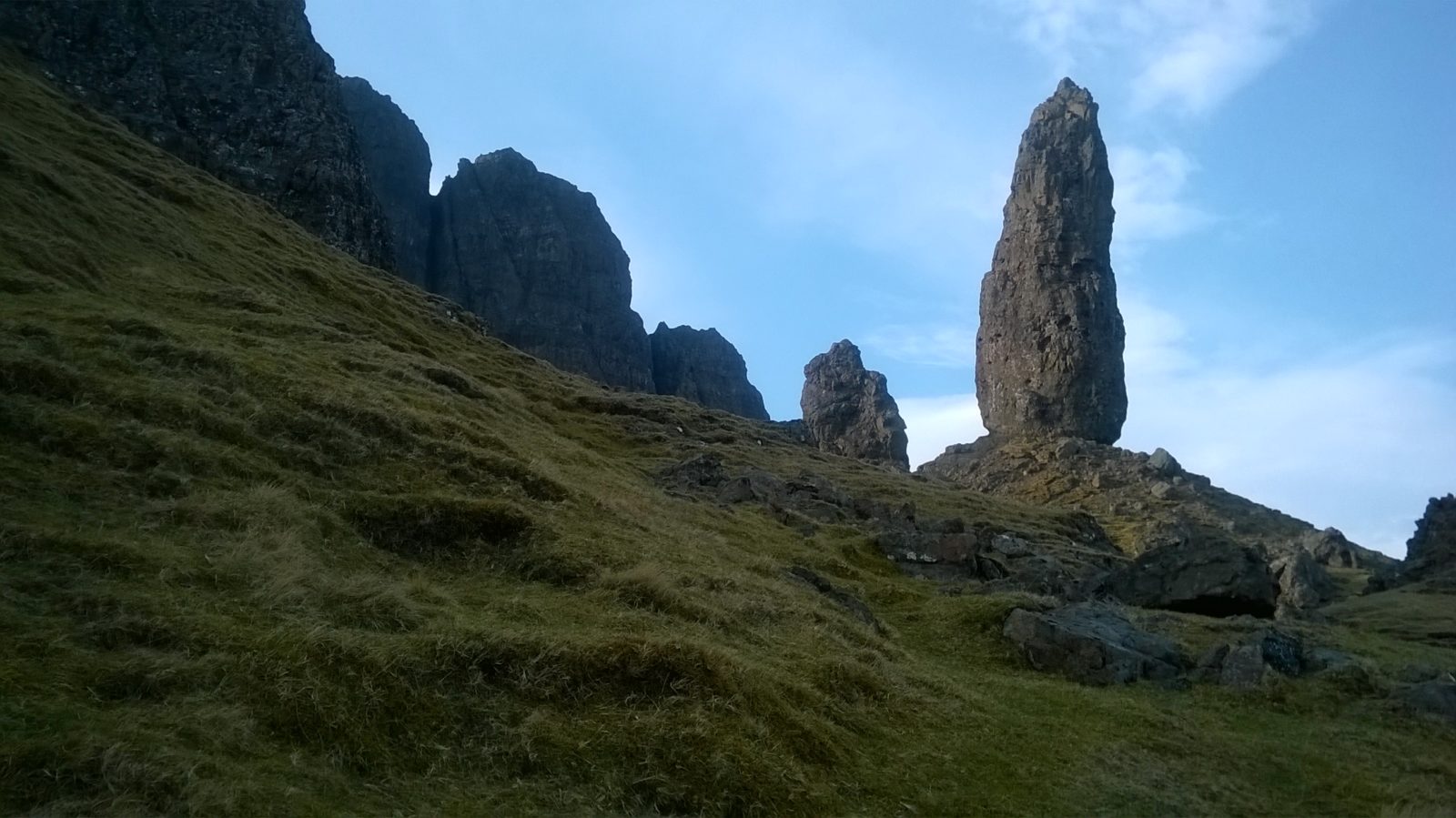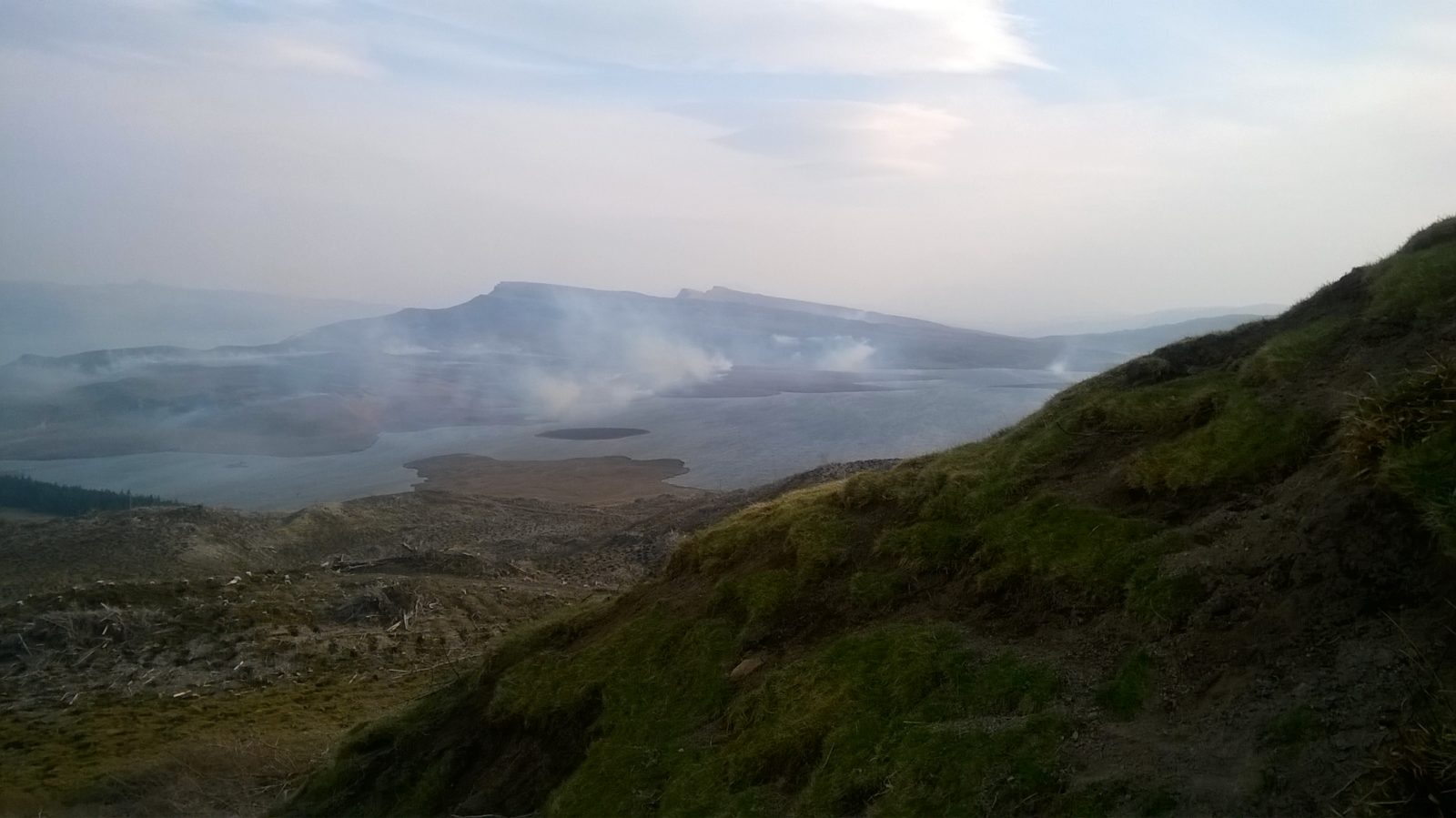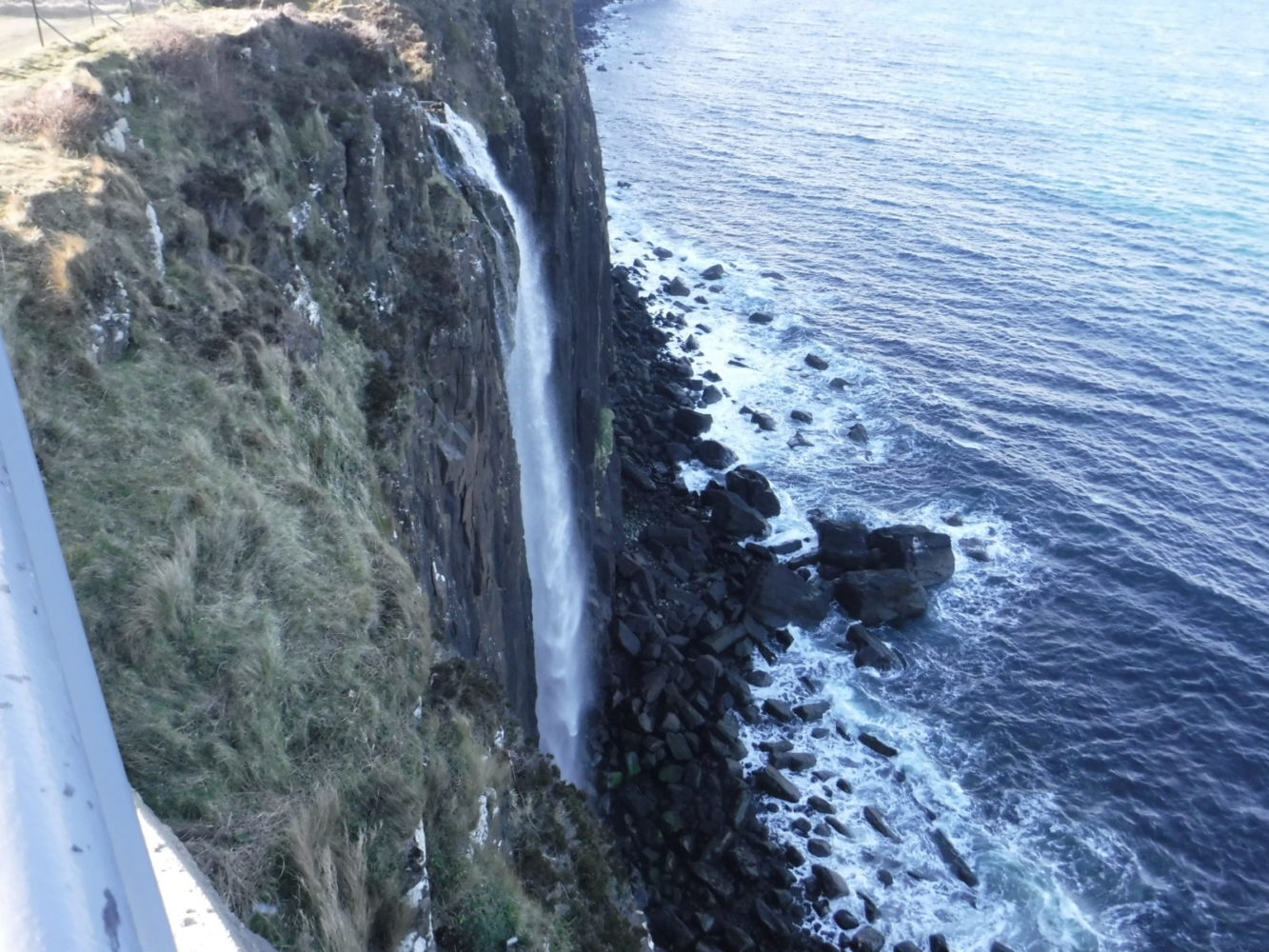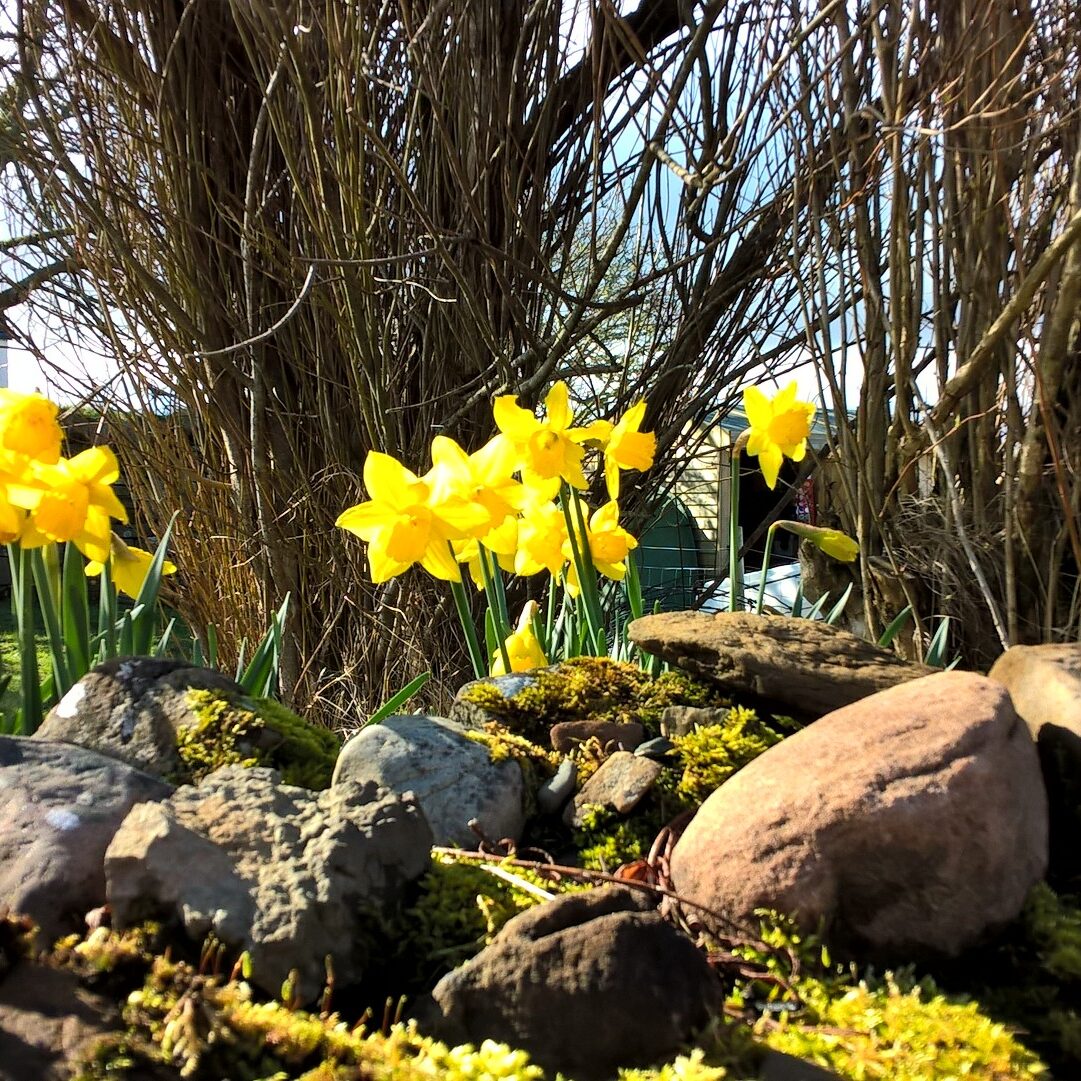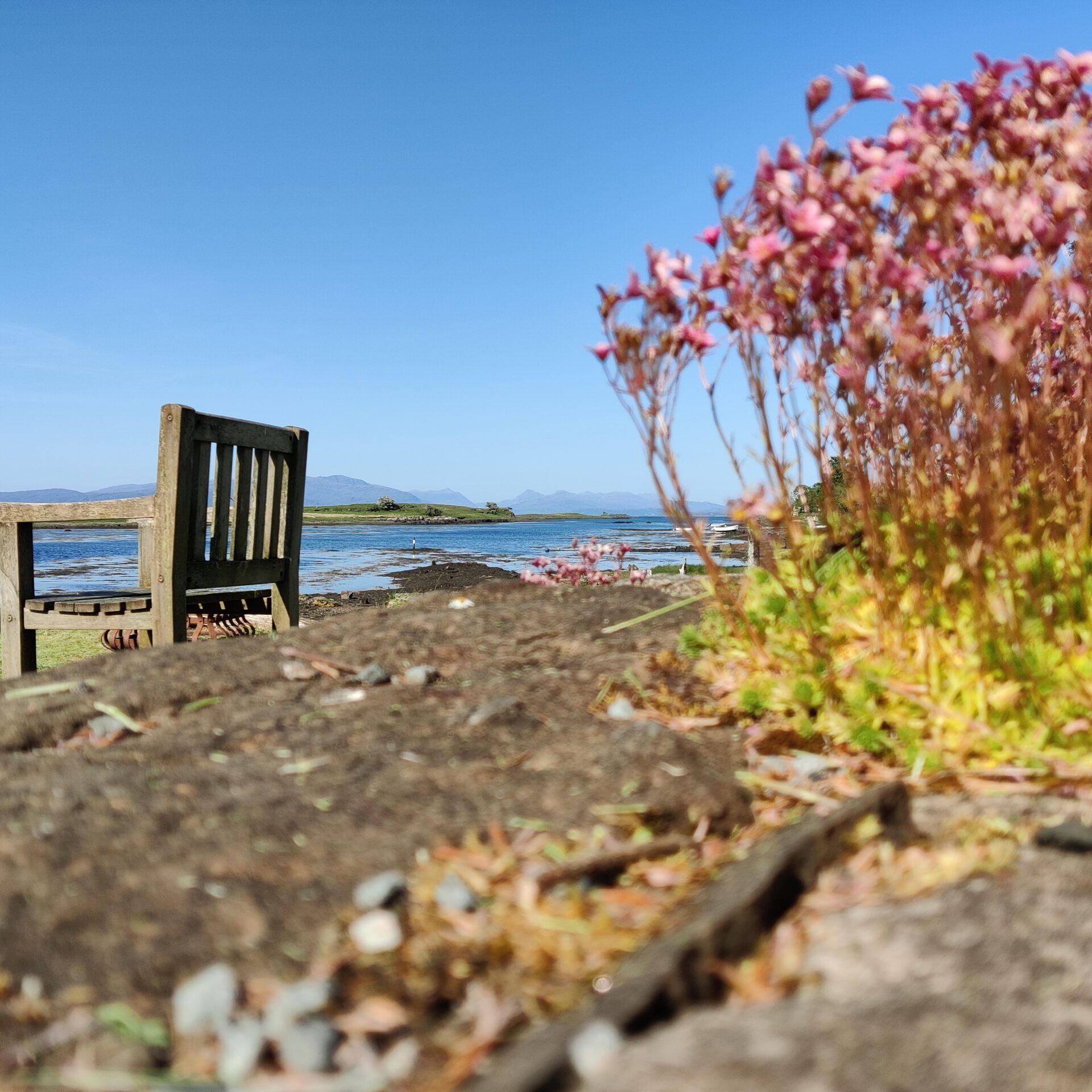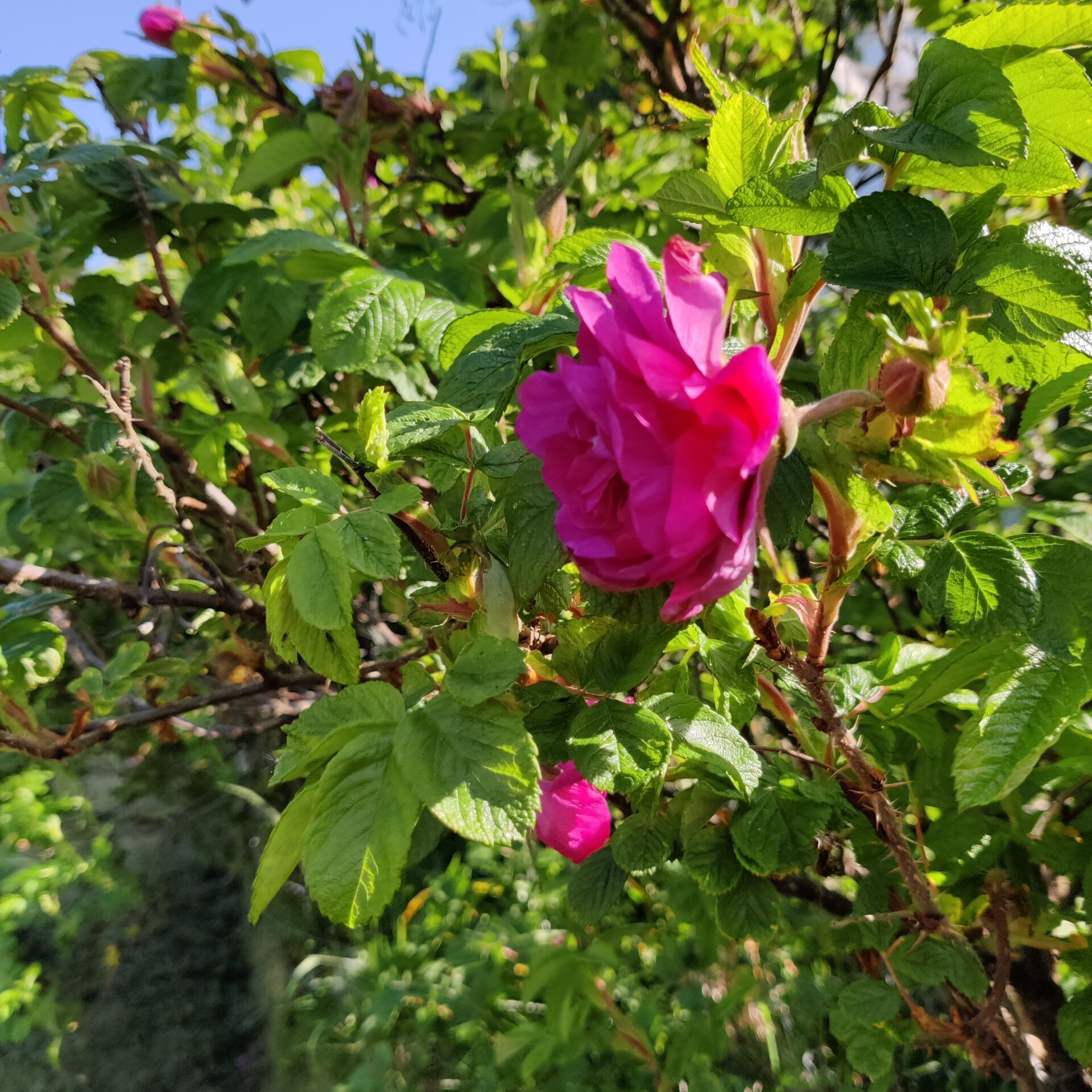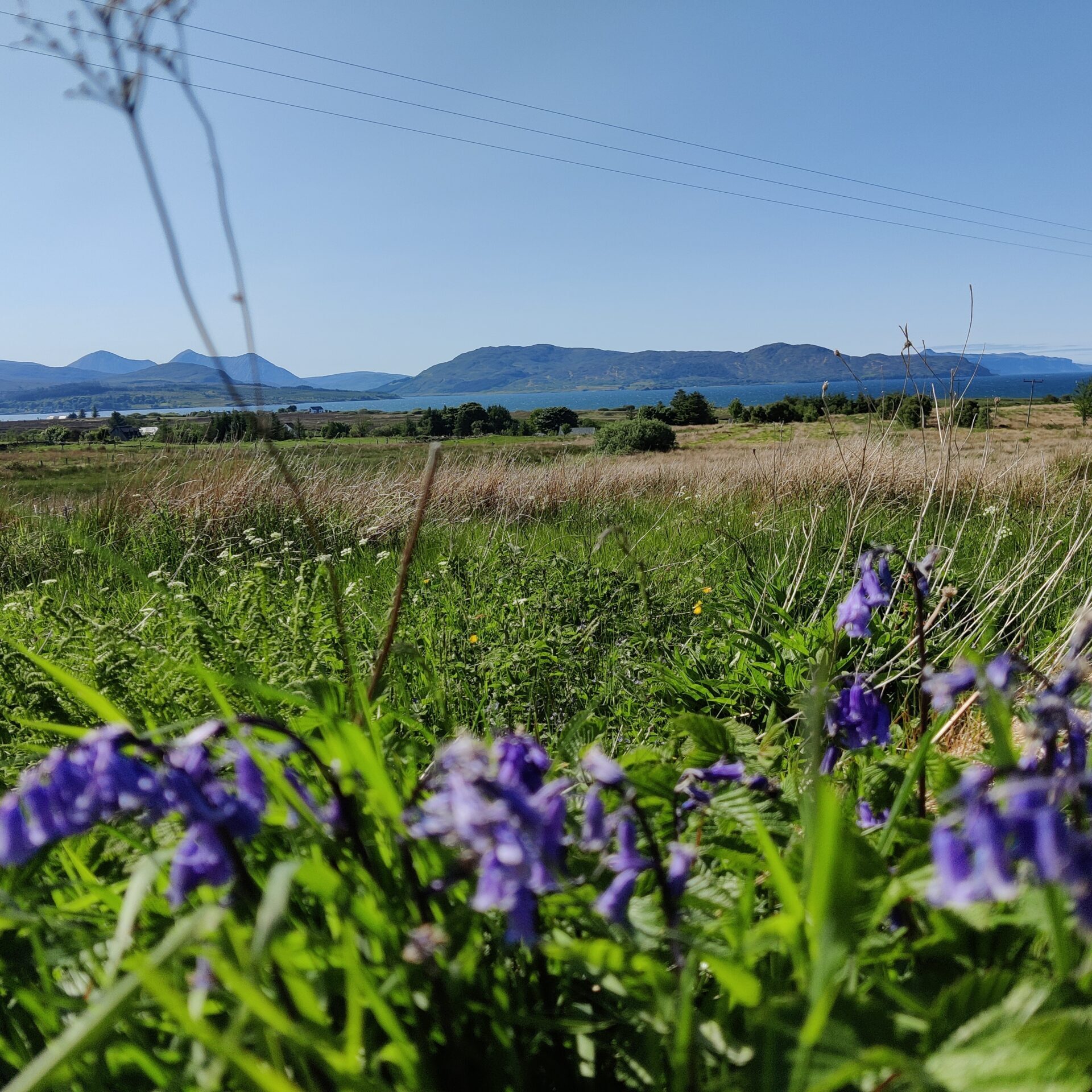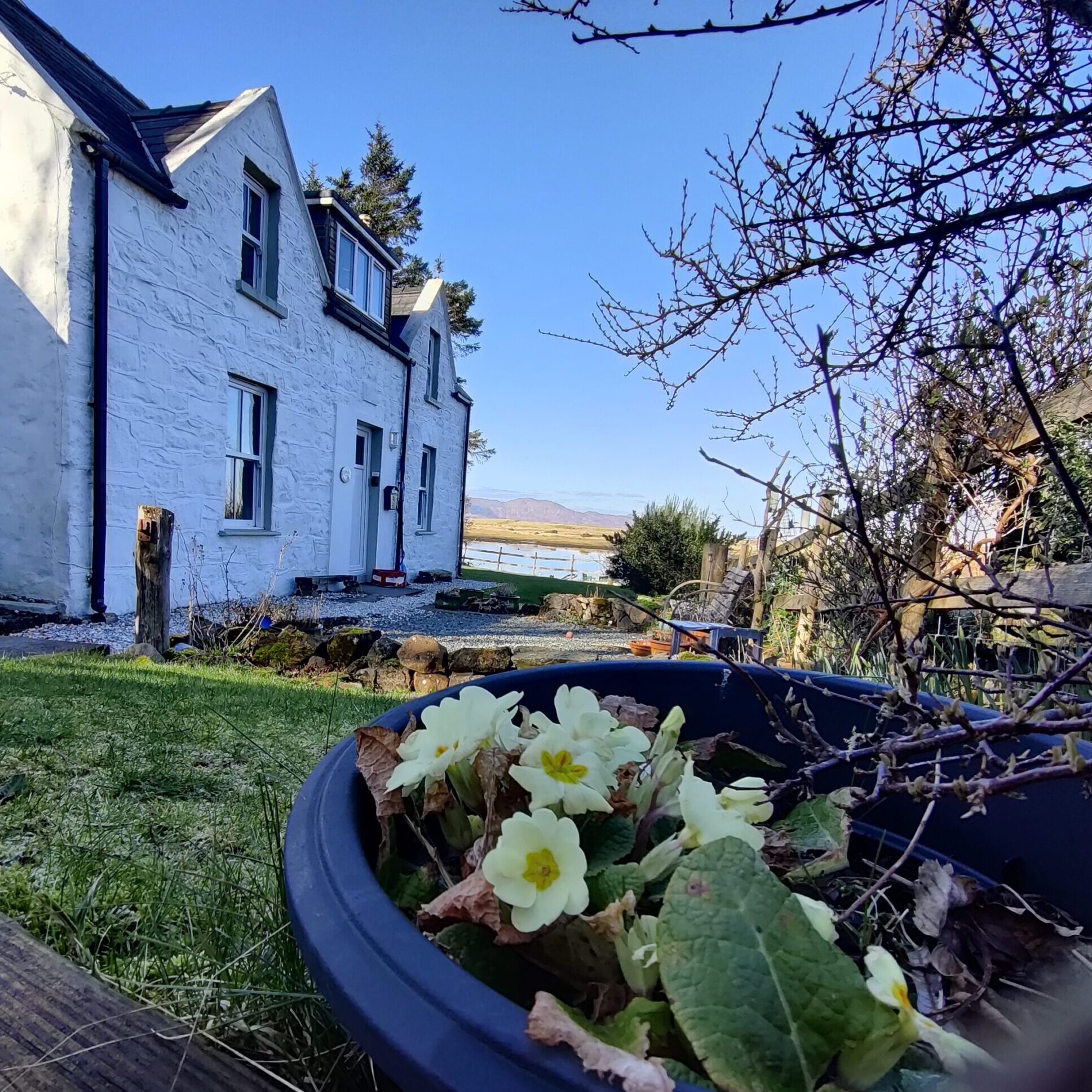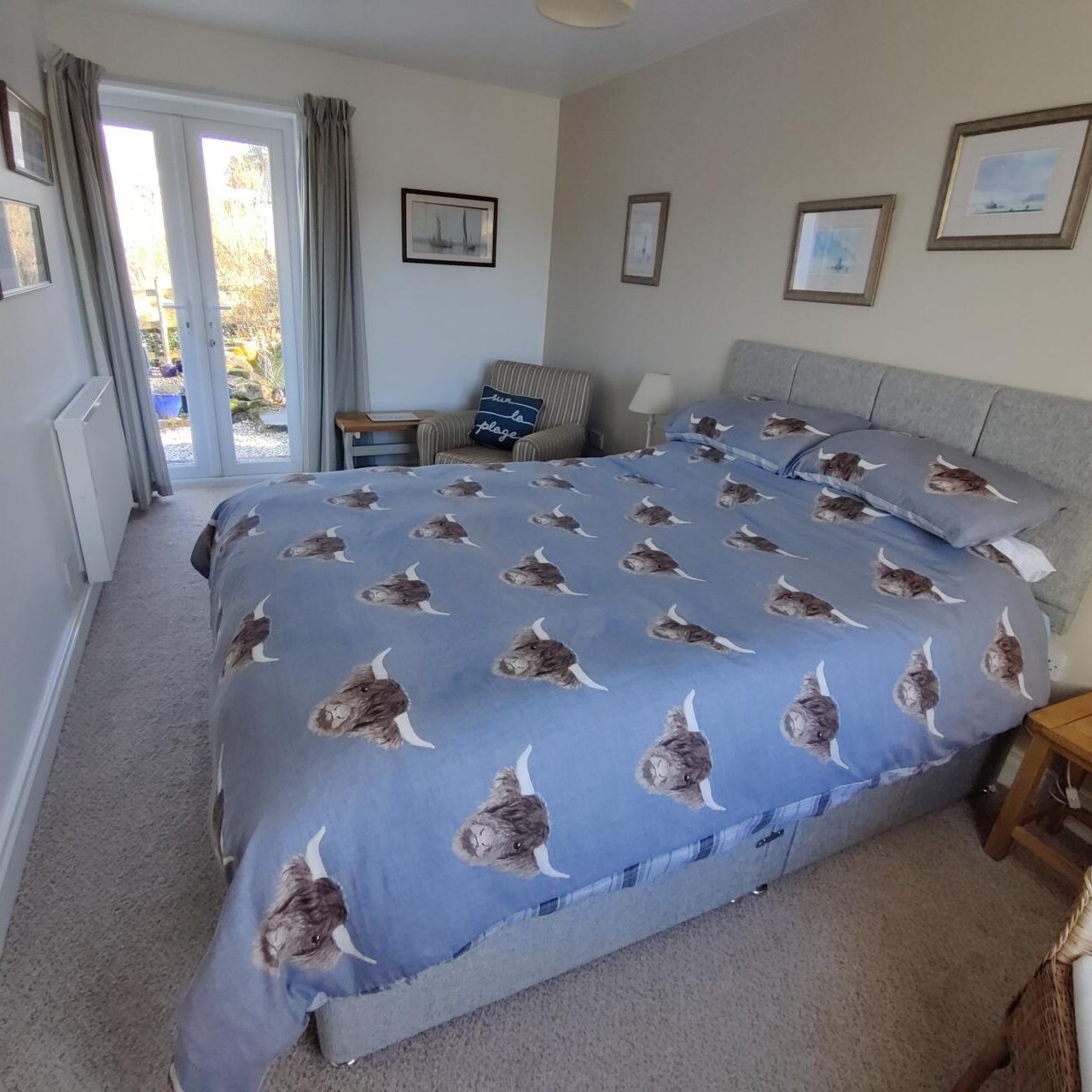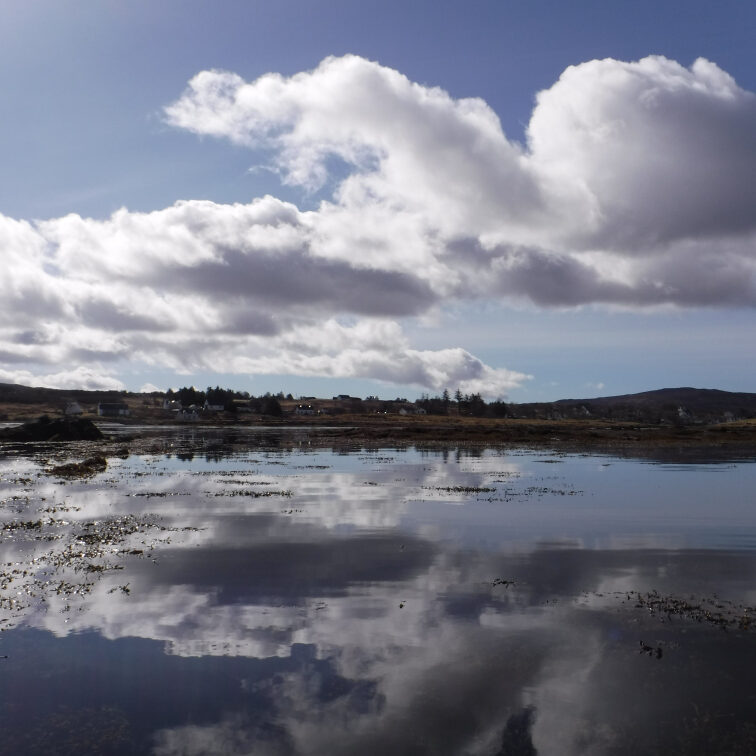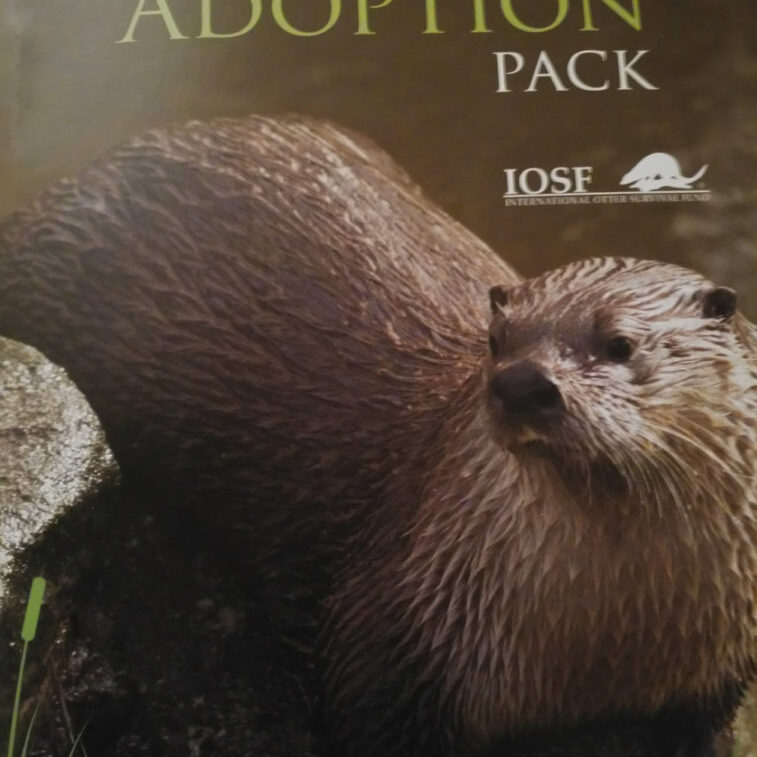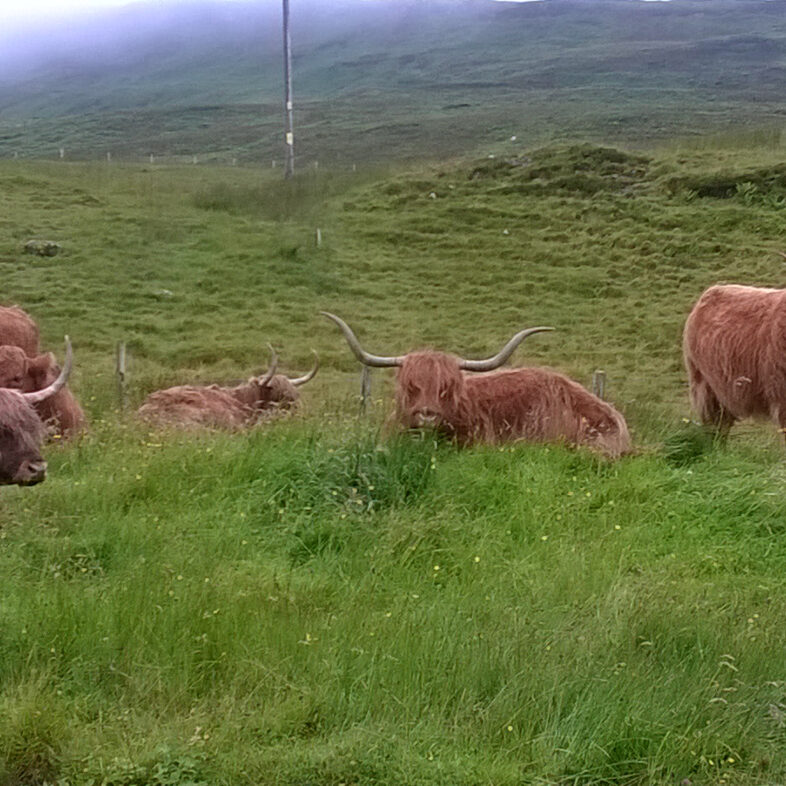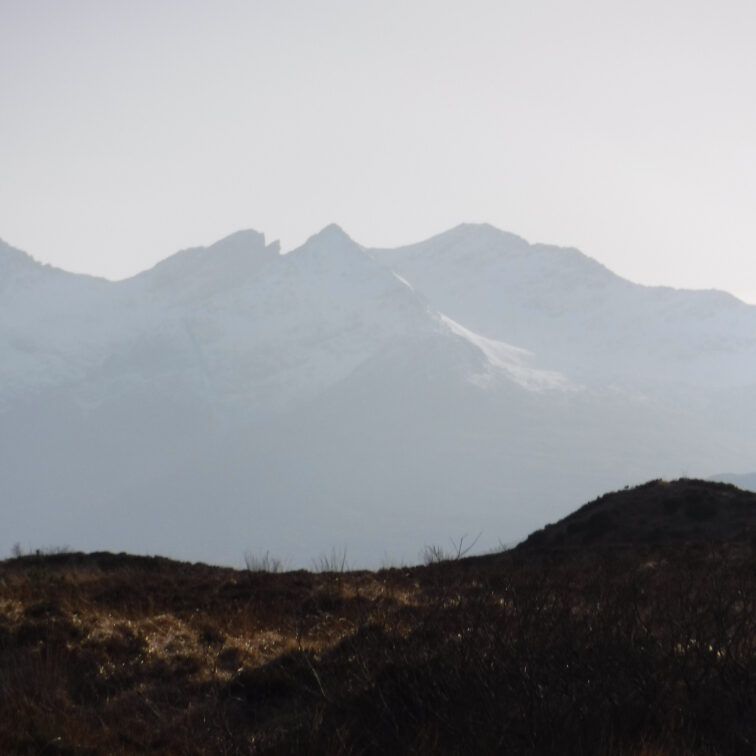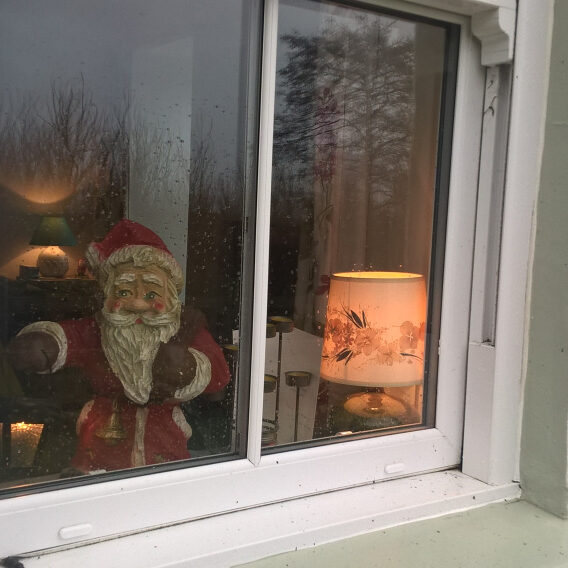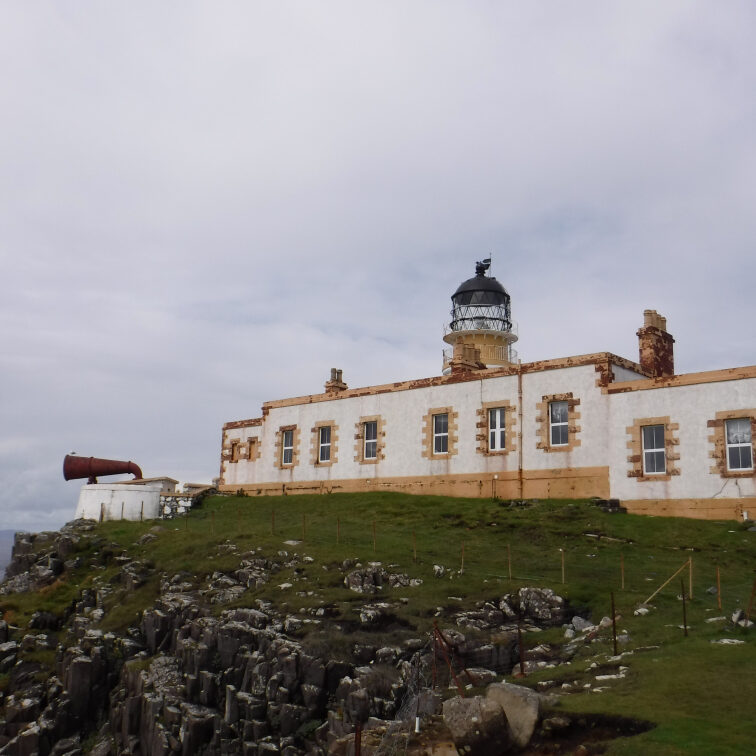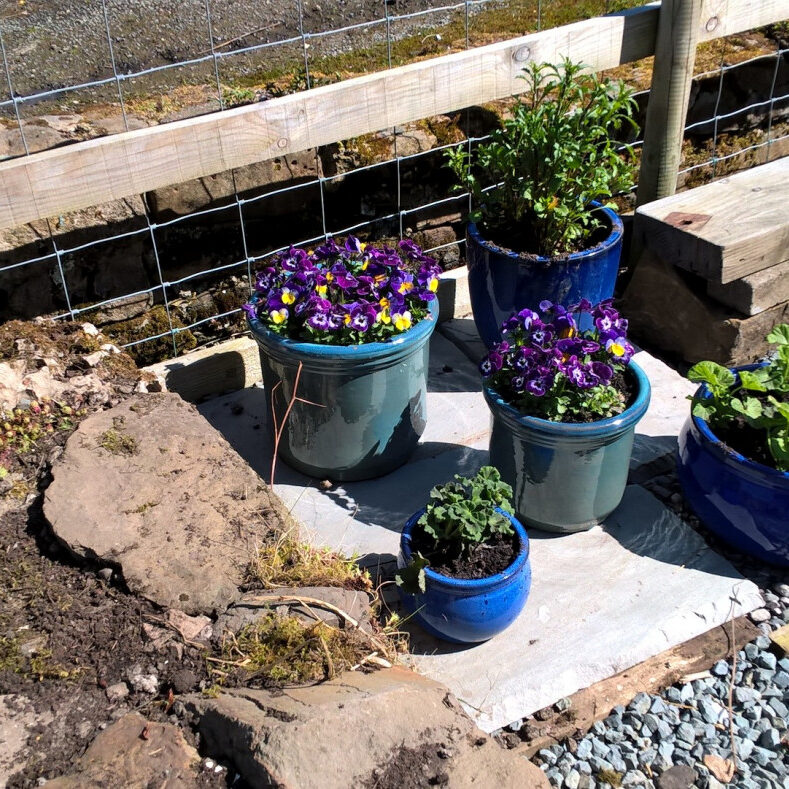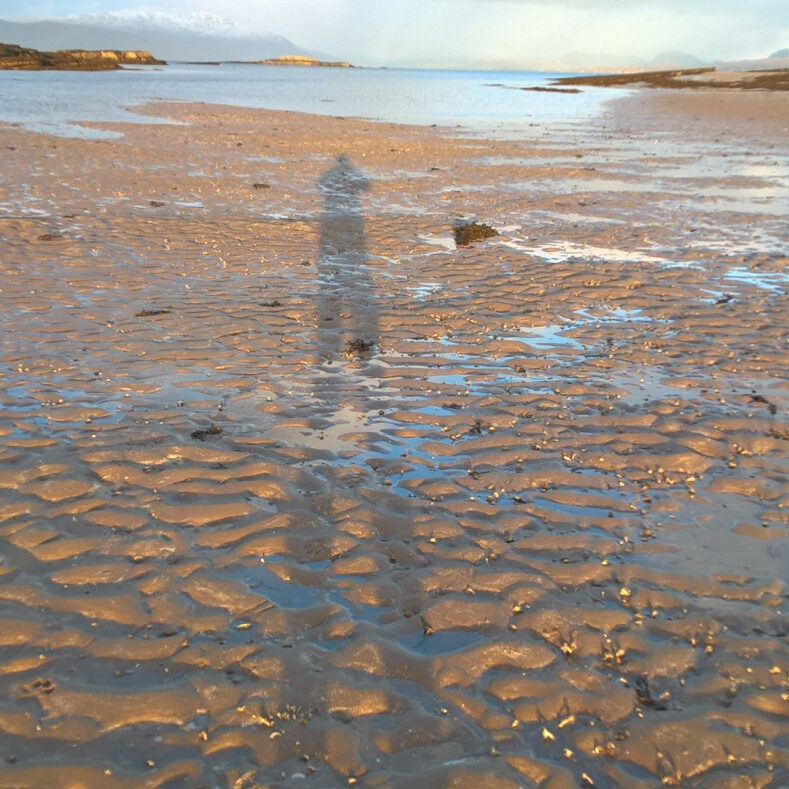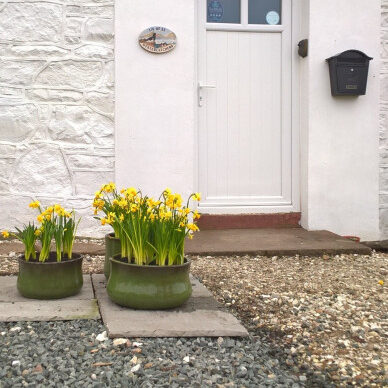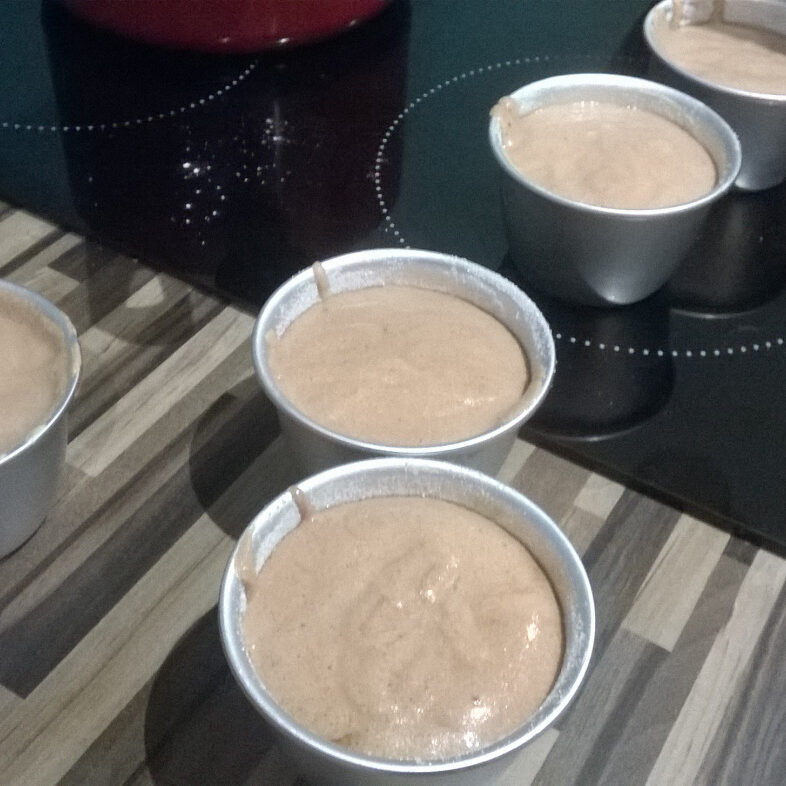Further Afield…Trotternish
Trotternish is the northernmost peninsula of the Isle of Skye. Its most northerly point, Rubha Hùinis, is the most northerly point of Skye. It is the strongest Gaelic-speaking area of Skye, and there is a museum by Kilmuir depicting old Skye life, close to which you can visit Flora MacDonald’s grave. for more information on the Museum please look at this site
One of the peninsula’s better-known features is the Trotternish landslip, a massive landslide that runs almost the full length of the peninsula (some 30 km – 19 miles). The landslip contains two of Skye’s most famous landmarks: the Old Man of Storr, an isolated rocky pinnacle, and the Quiraing, an area of dramatic and unusual rock formations. The summit of the Storr, on whose slopes the Old Man of Storr is located, is the highest point of the peninsula. The north-eastern part of the peninsula around Quiraing is designated as a National Scenic Area, with spectacular waterfalls from the cliffs to the sea, as at Kilt Rock, and the entire landslip is a Special Area of Conservation – so again, please only park in designated areas.
Dinosaur footprints have been found near Staffin on the beach. There is a fair cluster of footprints on a bed of sandstone on the beach. The prints are covered by the sea at high tide, and are often covered by sand in the summer. The best time to see them is after a winter storm, when the sea has swept the sand away, but it’s worth a look at any time. There is a small Dinosaur Museum in Staffin in a former Gaelic school, where you can see more fossils up close, without the risk of getting caught by the tide. Book online beforehand.
